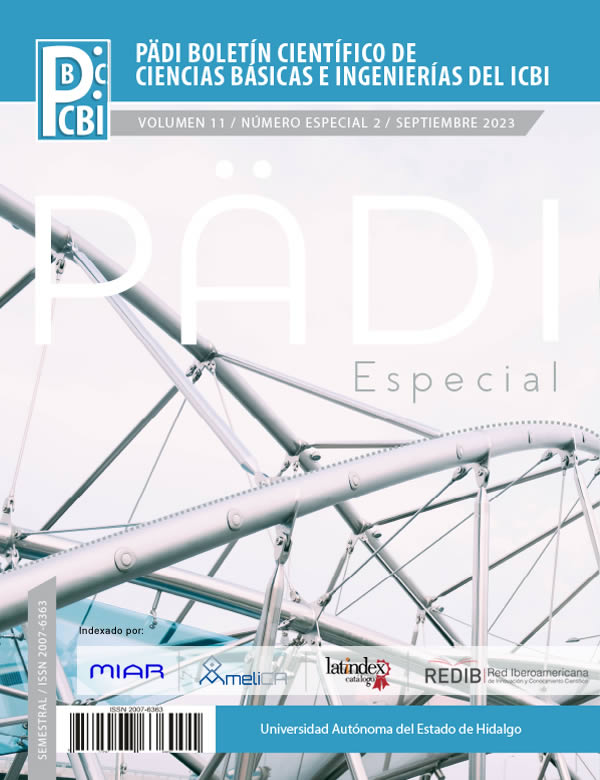Energy regulation of an underwater unmanned vehicle
Abstract
Recently, energy regulation was introduced as a new control objective for robot manipulators, which is based on an energy shaping plus damping injection approach. The theoretical framework is applied in this paper to achieve energy regulation of an underwater unmanned vehicle (AUV). The proposed controller is designed using partial damping injection to generate oscillations in the AUV along the axes, where the user can set a desired frequency and amplitude through explicit controller tuning guidelines. An advantage of the proposed controller is that it requires less control effort than a trajectory tracking controller with full damping injection, which can be useful in minimizing AUV power consumption. Numerical simulations on a fully actuated six degree-offreedom AUV model are shown to illustrate the performance of the proposed controller.
Downloads
References
Chen, Y., Zhang, R., Zhao, X., and Gao, J. (2016). Adaptive fuzzy inverse trajectory tracking control of underactuated underwater vehicle with uncertainties. Ocean Engineering, 121:123–133.
Cho, G., Li, J., Park, D., and Jung, J. (2020). Robust trajectory tracking of autonomous underwater vehicles using back-stepping control and time delay estimation. Ocean Engineering, 201:107131.
Donaire, A., J.G.Romero, and Pérez, T. (2017). Trajectory tracking passivitybased controlfor marine vehicles subject to disturbances. Journal of Franklin Institute, 354:2167–2182.
Fossen, T. I. (2011). Handbook of Marine Craft Hydrodinamics and Motion Control. Wiley, Hoboken.
García-Molleda, D., Sandoval, J., Coria, L., and Bugarin, E. (2022). Energy-based trajectory tracking control for underwater vehicles subject to disturbances with actuator partial faults and bounded input. Ocean Engineering, 246.
Guerrero, J., Torres, J., Creuze, V., and Campos, E. (2019a). Saturation based nonlinear pid control for underwater vehicles: Design, stability analysis and experiments. Mechatronics, 61:96–105.
Guerrero, J., Torres, J., Creuze, V., and Chemori, A. (2019b). Trajectory tracking for autonomous underwater vehicle: An adaptive approach. Ocean Engineering, 172:511–522.
Guerrero, J., Torres, J., Creuze, V., and Chemori, A. (2020). Adaptive disturbance observer for trajectory tracking control of underwater vehicles. Ocean Engineering, 200:107080.
Higuera, C., Sandoval, J., Coria, L., and Bugarin, E. (2022). An autonomous unmanned underwater control test vehicle: platform description and experiments. Journal of Mechanical Science and Technology, 36:395–405.
Jia, Z., Qiao, L., and Zhang, W. (2020). Adaptive tracking control of unmanned underwater vehicles with compensation for external perturbations and uncertainties using port-hamiltonian theory. Ocean Engineering, 209:107402.
Khalil, H. K. (2002). Nonlinear Systems. Prentice-Hall, Upper Saddle River, New Jersey, USA.
Mohan, S. and Kim, J. (2015). Coordinated motion control in task space of an autonomous underwater vehicle-manipulator system. Ocean Engineering, 104:155–167.
Perez, T., Donaire, A., Renton, C., and Valentinis, F. (2013). Energy-based motion control of marine vehicles using interconnection and damping assignment passivity-based control - a survey. 9th IFAC Conference on Control
Applications in Marine Systems The International Federation of Automatic Control, Osaka, Japan, pages 316–327.
Sahoo, A., S.Dwivedy, and Robi, P. (2019). Advancements in the field of autonomous underwater vehicle. Ocean Engineering, 181:145–160.
Sandoval, J., Kelly, R., Santibáñez, V., and Villalobos-Chin, J. (2022). Energy regulation of torque-driven robot manipulators in joint space. Journal of the Franklin Institute, 359:1427–1456.
Valentinis, F., Donaire, A., and Perez, T. (2013). Control of an underactuatedslender-hull unmanned underwater vehicle using port-hamiltonian theory. 2013 IEEE/ASME International Conference on Advanced Intelligent Mechatronics (AIM), Wollongong, Australia, pages 1546–1551.
Valentinis, F., Donaire, A., and Perez, T. (2015a). Energy-based guidance of an underactuated unmannedunder water vehicle on a helical trajectory. Control Engineering Practice, 44:138–156.
Valentinis, F., Donaire, A., and Perez, T. (2015b). Energy-based motion control of a slender hull unmanned underwater vehicle. Ocean Engineering, 104:604–616.
Copyright (c) 2023 Jesús Alberto Sandoval-Galarza, César Higuera-Verdugo, Víctor Adrián Santibáñez-Dávila, Jorge Villalobos-Chin

This work is licensed under a Creative Commons Attribution-NonCommercial-NoDerivatives 4.0 International License.













